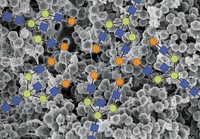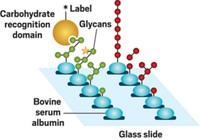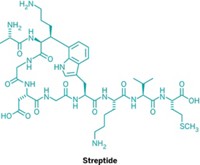Advertisement
Grab your lab coat. Let's get started
Welcome!
Welcome!
Create an account below to get 6 C&EN articles per month, receive newsletters and more - all free.
It seems this is your first time logging in online. Please enter the following information to continue.
As an ACS member you automatically get access to this site. All we need is few more details to create your reading experience.
Not you? Sign in with a different account.
Not you? Sign in with a different account.
ERROR 1
ERROR 1
ERROR 2
ERROR 2
ERROR 2
ERROR 2
ERROR 2
Password and Confirm password must match.
If you have an ACS member number, please enter it here so we can link this account to your membership. (optional)
ERROR 2
ACS values your privacy. By submitting your information, you are gaining access to C&EN and subscribing to our weekly newsletter. We use the information you provide to make your reading experience better, and we will never sell your data to third party members.
Biological Chemistry
Solving The Mystery Of Sugar Chain Growth
Assay based on mass spectrometry reveals mechanistic secrets of a polymer-building enzyme
by Laura Cassiday
July 15, 2011

Mycobacterium tuberculosis, the microbe responsible for tuberculosis, uses an unusually strong cell wall, fortified with a carbohydrate called galactan, to protect itself from harsh environments and its host’s immune system. Sugar polymers like galactan are built by enzymes called glycosyltransferases, which add successive sugar molecules to a chain, like beads on a string. Now researchers have developed an assay based on mass spectrometry to answer a long-standing question about the mechanism of these enzymes (J. Am. Chem. Soc., DOI: 10.1021/ja204448t).
Understanding how M. tuberculosis builds galactan could allow researchers to design drugs that interfere with the process, allowing infected people to mount an effective immune response, says Laura Kiessling, a chemical biologist at the University of Wisconsin, Madison.
Kiessling and her colleagues wanted to know whether GlfT2, one of the glycosyltransferases that synthesize galactan, uses what biochemists call a processive or distributive mechanism. Processive enzymes remain bound to the carbohydrate chain as they add monomers, while distributive enzymes fall off the sugar chain after each addition and then bind another chain. Drug designers would like to exploit such a mechanistic understanding in developing enzyme inhibitors, Kiessling says.
To distinguish between the two mechanisms, the researchers designed an assay that detects how often GlfT2 swaps polymer partners during elongation of the sugar chain. Initially, the team exposed GlfT2 to a lipid-linked oligosaccharide that mimics the base of the growing galactan chain. After allowing the enzyme to bind this molecule and start adding sugar monomers, the scientists introduced a deuterium-labeled version of the lipid-linked molecule. After the enzyme continued working to add monomers, the researchers analyzed the reaction products with matrix-assisted laser-desorption/ionization time-of-flight mass spectrometry to measure the length of the sugar chains and to determine whether or not they were labeled with deuterium.
Kiessling expected that if the enzyme was processive, the longest carbohydrate chains would be unlabeled, because the enzyme would tightly latch onto the initial, unlabeled base molecule and wouldn’t get distracted when the labeled one appeared. In contrast, a distributive mechanism would produce labeled and unlabeled carbohydrate chains of roughly equal lengths because the two lipid-linked molecules would have equal access to the enzyme each time it fell off a chain.
When Kiessling and her colleagues examined the mass spectrometry data, they found that none of the longest chains were labeled, suggesting to them that GlfT2 used a processive mechanism. Moreover, the researchers quantified the degree of processivity, or the probability that an enzyme bound to the chain would add another sugar before it fell off the chain. They determined that GlfT2’s processivity increased as the sugar chain grew, suggesting that the enzyme, like some other polymer-building enzymes, binds more tightly to longer chains.
“This elegant, straightforward approach will be widely used by researchers studying carbohydrate polymerization, and could be applied to other polymers as well,” says Todd Lowary, a chemist at the University of Alberta. The knowledge that GlfT2 shows greater affinity for longer sugar chains could be used to design inhibitors for use as antibiotics, he adds, although a crystal structure of the enzyme would better aid drug design.





Join the conversation
Contact the reporter
Submit a Letter to the Editor for publication
Engage with us on Twitter